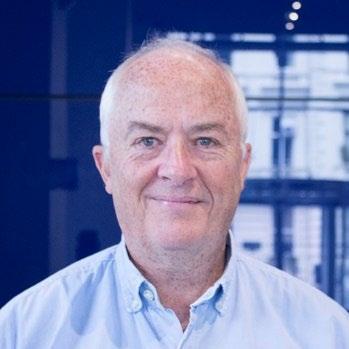SENG Distinguished Workshop Series 2024 - Research in Non Destructive Evaluation (NDE) at Imperial College London
Supporting the below United Nations Sustainable Development Goals:支持以下聯合國可持續發展目標:支持以下联合国可持续发展目标:
The NDE research group at Imperial College has a long history of applied research for NDE in industry. This includes a wide spectrum of work from applied mathematics to new techniques licensed to industry, spin-out companies and the creation of NDE software. The group was also the founder of the UK Research Centre in NDE (RCNDE) in 2003, which continues to act as a hub for university reserarchers and industry to coordinate and collaborate on delivering solutions to the NDE challenges in industry.
The presentation will start with an overview of the structure and role of the Imperial College NDE group, together with the RCNDE. The majority of the presentation will then cover an example of a recent success story in an exciting scientific investigation that delivered new capability to industry. This is the development of a method to calculate the expected amplitude of the scattering of ultrasound from a rough defect, without having to know the details of the roughness. This is a surprising outcome because roughness has a strong effect on ultrasound scattering. This breakthrough in capability allows industrial inspectors to anticipate the strength of the reflection of an ultrasound signal from an unknown real rough defect and thus to be able to quantify the expected sensitivity of the inspection.

The NDE research group at Imperial College has a long history of applied research for NDE in industry. This includes a wide spectrum of work from applied mathematics to new techniques licensed to industry, spin-out companies and the creation of NDE software. The group was also the founder of the UK Research Centre in NDE (RCNDE) in 2003, which continues to act as a hub for university reserarchers and industry to coordinate and collaborate on delivering solutions to the NDE challenges in industry.
The presentation will start with an overview of the structure and role of the Imperial College NDE group, together with the RCNDE. The majority of the presentation will then cover an example of a recent success story in an exciting scientific investigation that delivered new capability to industry. This is the development of a method to calculate the expected amplitude of the scattering of ultrasound from a rough defect, without having to know the details of the roughness. This is a surprising outcome because roughness has a strong effect on ultrasound scattering. This breakthrough in capability allows industrial inspectors to anticipate the strength of the reflection of an ultrasound signal from an unknown real rough defect and thus to be able to quantify the expected sensitivity of the inspection.